Jun. 28, 2021
Cooking In Season
Salad Meals to Beat the Heat
In this recipe round up, I have gathered my best and most delicious summer salad meal recipes in one post, for days when it’s too hot to cook!
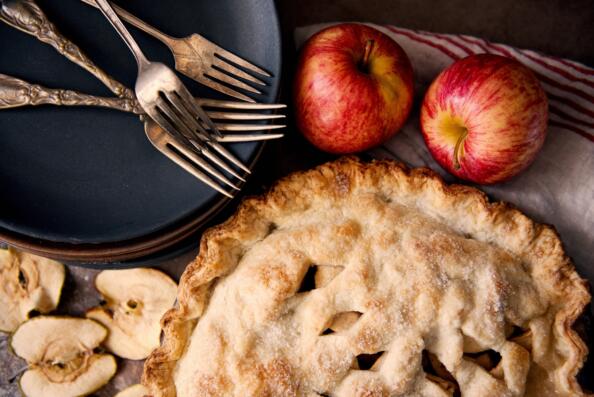
I have never been one to accept printed cooking lore as fact, at least not until I try it out for myself. Usually, the books are proven to be correct, but every once in a while I find that a hallowed cooking “fact” is actually a myth, copied from food writer to food writer with no critical assessment or experimentation (I’m looking at you Don’t-Salt-Your-Beans).
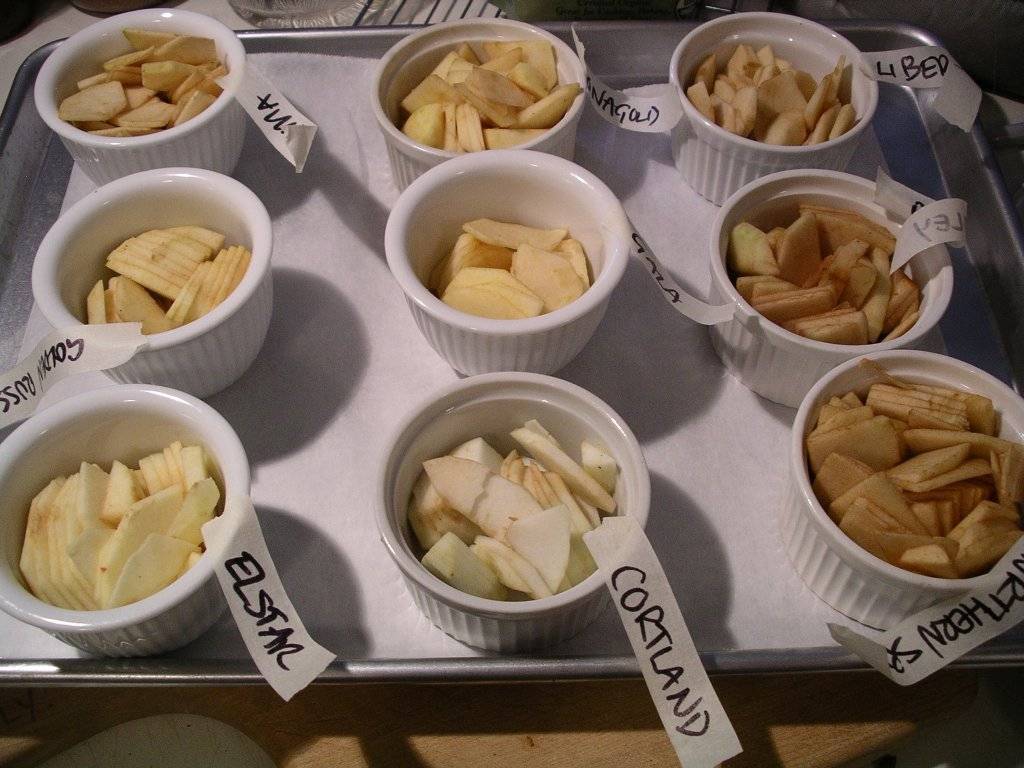
One such “fact” that I see everywhere, EVERYWHERE, is that Granny Smith apples are best for baking. They are reputed to “hold their shape” and to have “the best flavour”. I had always been a little suspicious of this and I decided a few years ago to put this “fact” to the ultimate test.
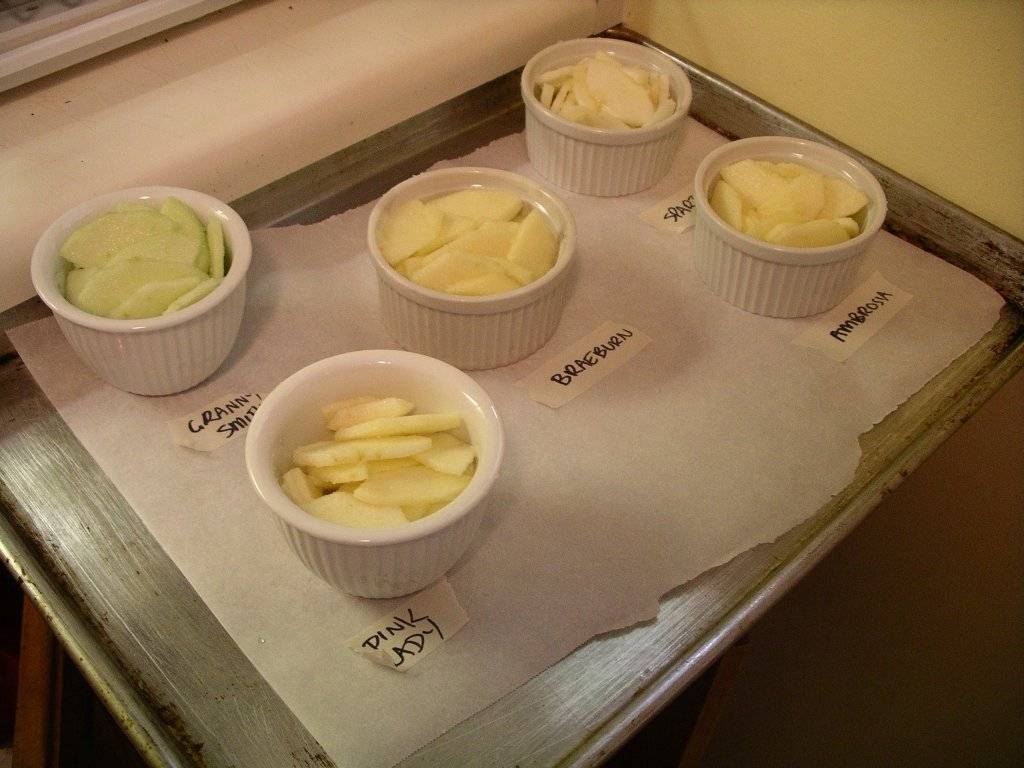
I have been meaning to blog about my Apple Test for years. It’s this obsessive kind of food experimentation that I particularly love to engage in, and the ensuing kitchen-prowess-making results are ones that I love to share with my cooking class participants. Students of my Pie-Making 101 class are already privy to this information regarding the Best Apple Varieties for Pies, and now, you, my blog readers get in on the action.
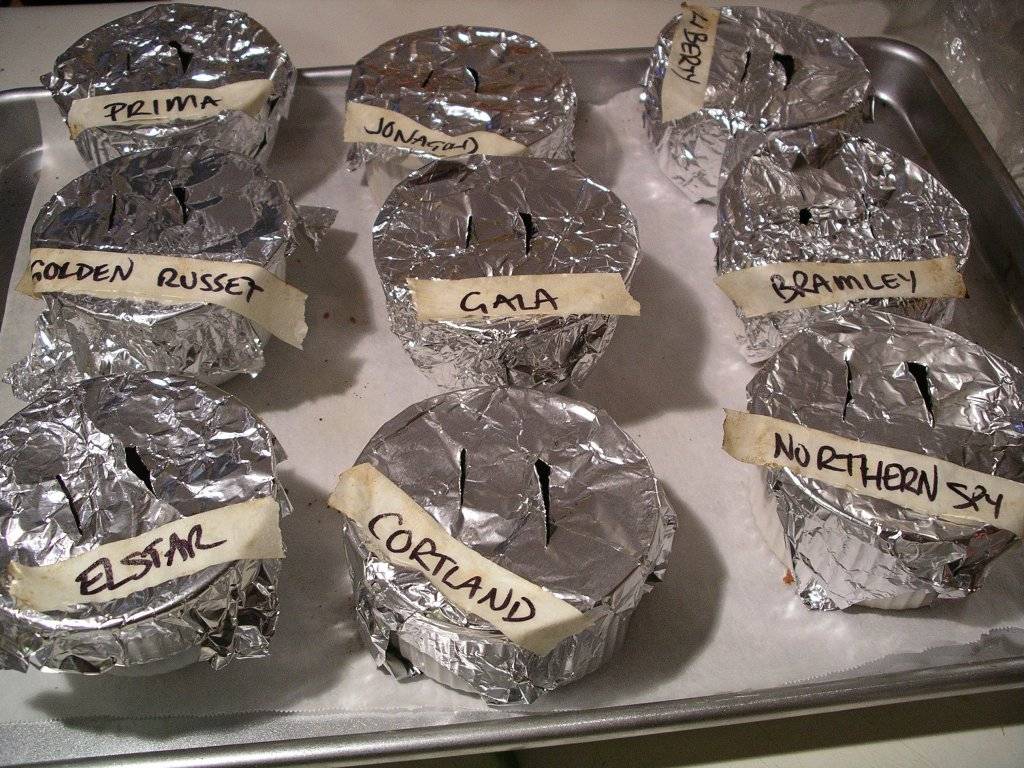
My Apple Test was epic. I don’t say this lightly. Trips to both farm stands and supermarkets netted 20 apple varieties to test. In order to mimic how each apple variety would behave in a pie, I did the following: each apple was peeled, sliced and tossed with an appropriate amount of sugar, and then placed in a ramekin covered with foil (the slits in the foil faithfully reproduced a pie top), labelled and baked. After being pulled from the oven, the apple varieties were all tested for flavour and texture. The results were completely different than I expected and well worth the effort! I love this kind of thing!
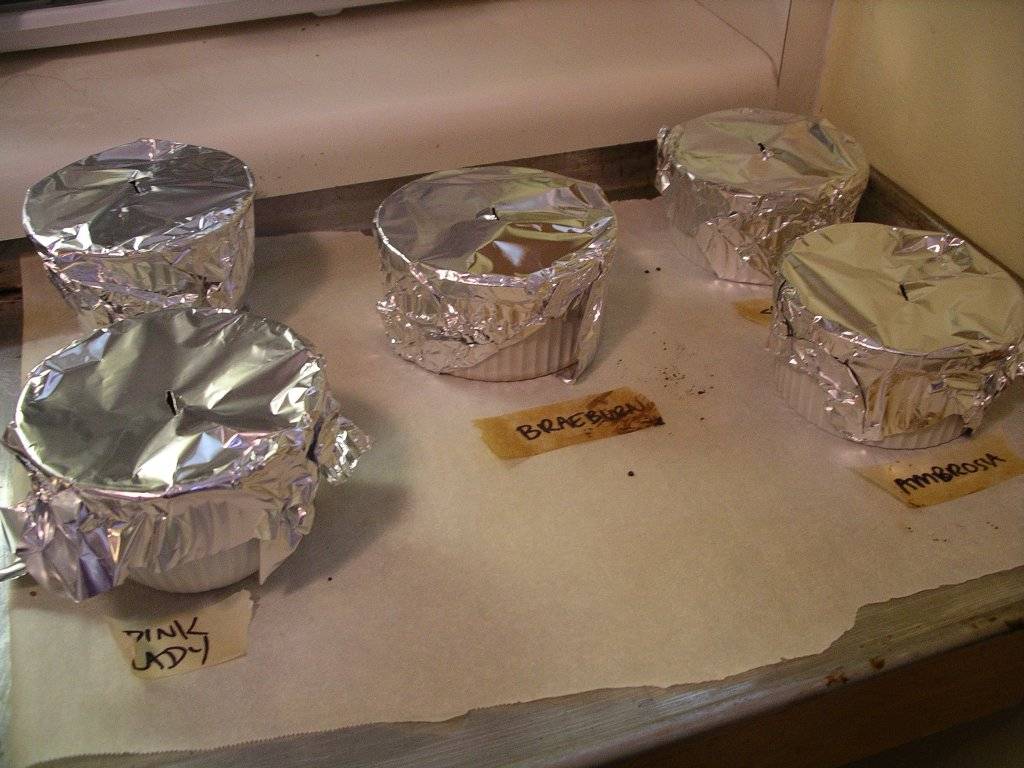
The most important thing I discovered in the Epic Apple Test is that tart apples (i.e Granny Smith), revered in print for their shape-holding abilities, actually get mushy when cooked! And that sweet apples (i.e. Gala) hold their shape! Mind blown.
The flavour discoveries were not so mind-blowing. As expected, heritage apples purchased through the farm stands had better flavour, but almost all of the apple varieties tasted delicious when baked with a bit of sugar. Sure, some were much more tart than others, but each had a special flavour, even most of the good old supermarket apples. So you can tailor your apple choices based on your budget, time constraints, and sweetness preference, as well as take the time of year into account. Right now you can buy loads of heritage apples at Dan’s Country Market, but not so in March.
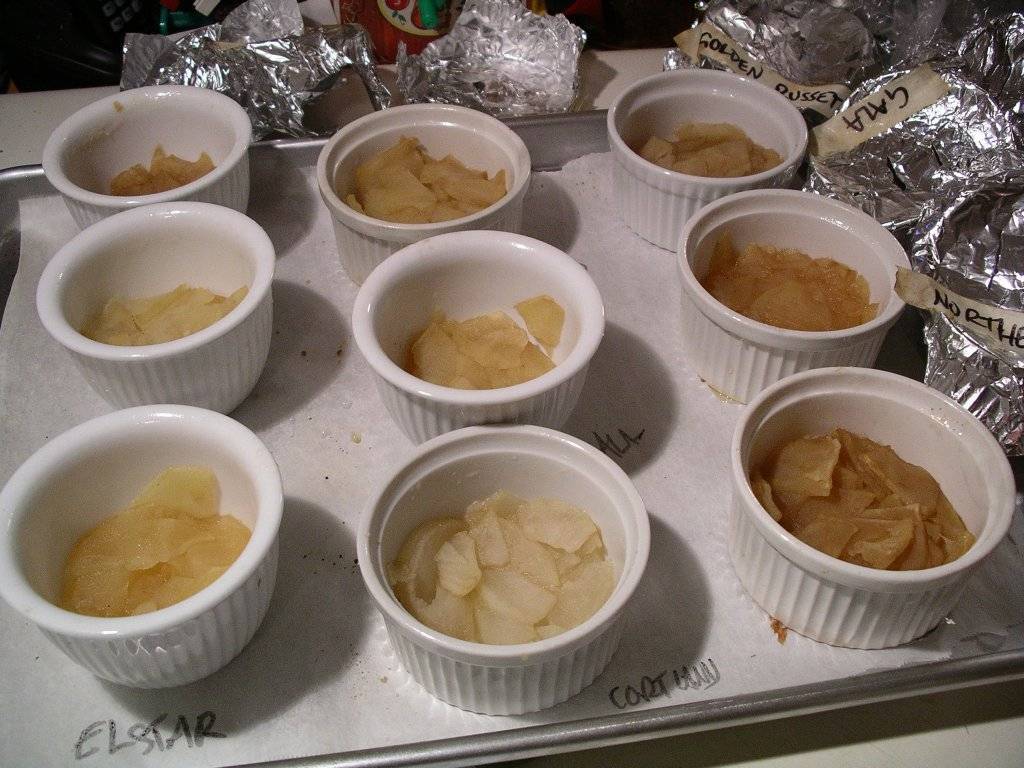
The detailed results of flavour and texture for 20 varieties of apple are below. In general, I discovered that apple pie works best with a mixture of at least two apple varieties, for the ultimate balance of flavour and texture.
An apple pie needs a mixture of both firm-textured (holds shape when baked) and soft-textured (breaks down when baked) apples, to make a filling that holds itself together with no additional thickener. (You want to avoid thickener, like flour or cornstarch, if possible, because it reduces the flavour intensity of the filling and can make it rubbery or gluey). The firm apples act like bricks which stack together to form a wall, while the mushy apples melt between the bricks to form a “mortar” that holds the “brick wall” together. Surprisingly, as I discovered in my Epic Apple Test, the sweet apples tend to hold their shape quite nicely, while the more tart apples get mushy. But, VERY IMPORTANT, you must slice your apples thinly to get the desired effect.
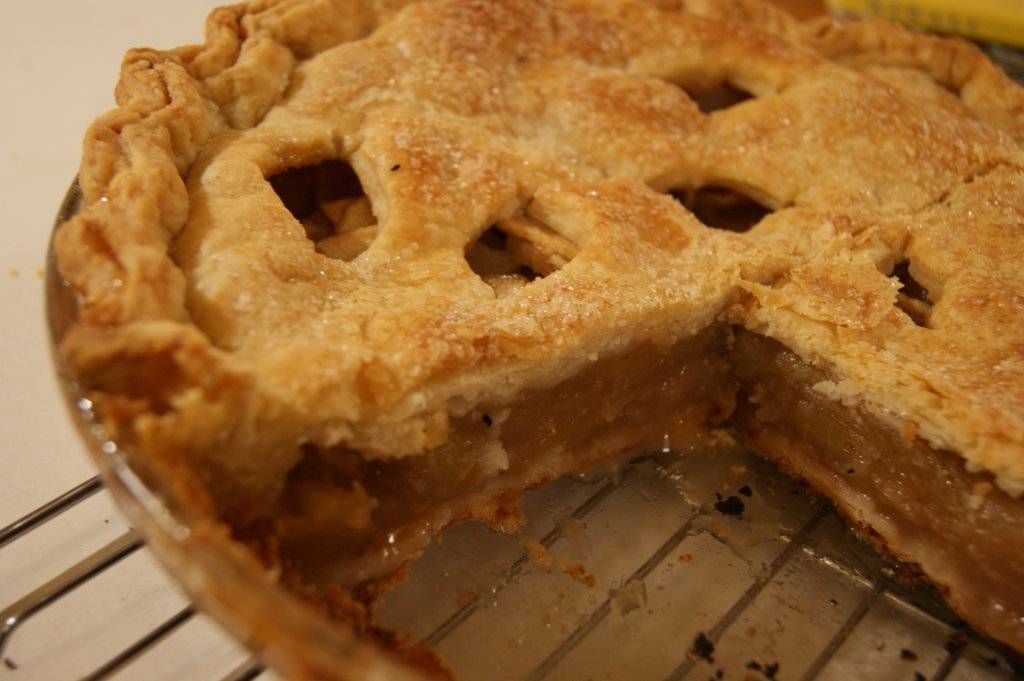 This, my faithful readers, is what an apple pie filling looks like with NO THICKENER (no flour or cornstarch), so long as you have paid attention to choosing the right apple varieties and slicing said apples thinly.
This, my faithful readers, is what an apple pie filling looks like with NO THICKENER (no flour or cornstarch), so long as you have paid attention to choosing the right apple varieties and slicing said apples thinly.
These apples include some supermarket varieties as well as a host of heritage apples, many which are famous for their baking qualities. In my experience, heritage apples are best for baking, not because they hold their shape well (they don’t), but because they all have a rich and complex flavour and a nice balance of tartness when cooked. Heritage varieties can be found at various farm stands in the fall, most notably at Dan’s Country Market on Oldfield road.
Golden Delicious – delicious, rich, sweet flavour
Jonagold – nice balance of sweet and tart, delicious, sometimes flowery
Ambrosia – sweet taste, nice “meaty” texture when cooked
Pink Lady – delicious flavour, balance of sweet and tart
Gala – very sweet, nice mild flavour, best to mix with tart apples
Elstar – delicious flavour and balance of sweet and tart, on the softer side when cooked
Golden Russet – a slightly mealier texture, mild and good flavour
Cortland – a sweet and unusual flavour, stays white when cooked
Liberty – tastes exactly like Minute Maid apple juice, softer texture, but still holds shape
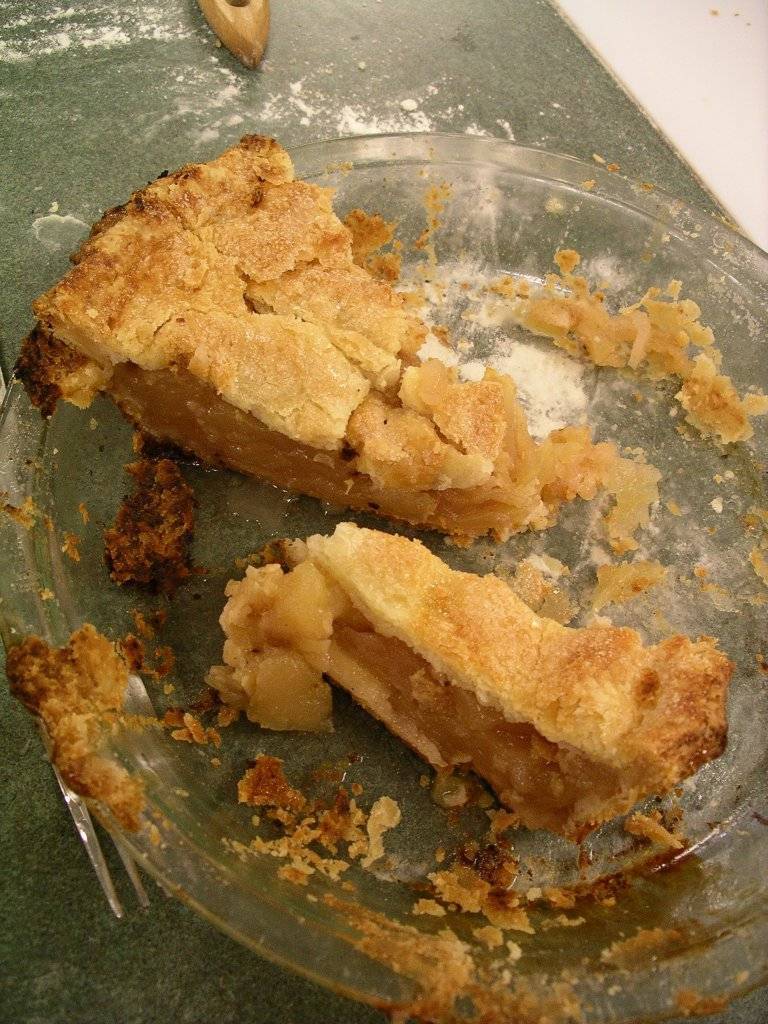
Macintosh – great flavour and balance of sweet and tart
Spartan – excellent flavour and sweet-tart balance
Granny Smith – very tart, less complexity than the tart heritage apples (below)
Jonathan – more tart, nice flavour
Bramley – very, very tart, excellent flavour, complex, delicious
Gravenstein – sweet-tart, excellent flavour, delicious pie apple
Northern Spy – very tart, nice flavour, excellent pie apple
Prima – quite sour, very good flavour
Belle de Boskoop – very tart, excellent flavour
Cox’s Orange Pippin – tart, delicious
Newton Pippin – tart, excellent, complex flavour
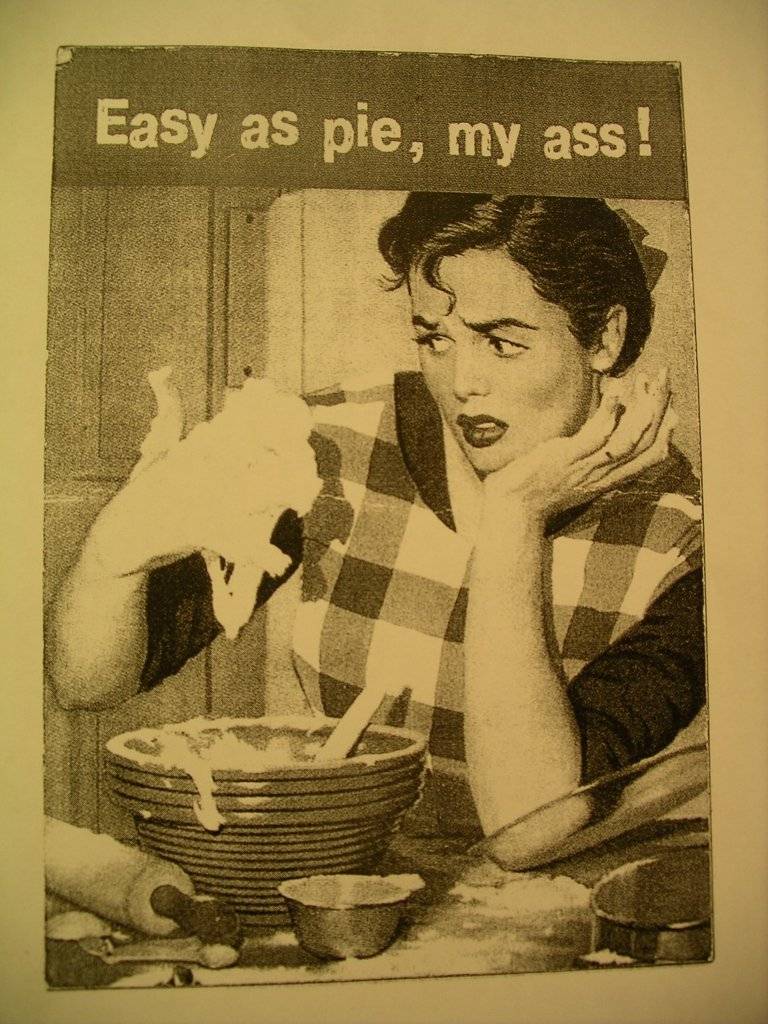
I’m interested to know what your experience has been, or will be now that you have seen this post. Let me know in the comments below. And in the meantime, happy autumn of pie cooking!
Jun. 28, 2021
In this recipe round up, I have gathered my best and most delicious summer salad meal recipes in one post, for days when it’s too hot to cook!
Oct. 25, 2020
Quince have a wonderful flavour, but an almost impossibly hard texture. Read on for a quick kitchen tip that makes quince easy to peel and cut!
Sep. 27, 2020
Pumpkin spices scones are a perfect fall treat; not-too-sweet, fragrant with spices, with a full complement of rich pumpkin flavour.
Notifications
Oh my goodness, his brings back so many great memories! I grew up in Mill Bay on an apple orchard (1 000 trees of various varieties). Elstar and Liberty were probably my top picks for eating.. but oh the pies! When I was in high school I used to sell apple pies at the Duncan Farmer’s Market, and yep, definitely mixed several types together for all my pies.
I just love that you did such a scientific experiment!
Unfortunately you missed the ultimate cooking apple (which isn’t much good for anything but cooking) – I swear by both grandma and granny’s apple pies which required the Transparent variety. I’m guessing because it isn’t any good for eating, it has never made it to your regular grocers shelves. I’ve only seen them available from the older generation back in Ontario who have kept the requisite tree around just for the sake of continued supply for apple pies. Hopefully some astute farmer’s/pie eaters have the foresight to keep these varietals around.
Hi Martin, I didn’t include Transparents because they are only available for such a short time – usually late August. I agree, they are an excellent baking apple, but since they ripen at least a month before other apple varieties, I mix them up with blackberries for pies.
Yes, transparent great, but can’t be bought out west, another great one (not grown now) is Wolf River, they’re Hugh
Yes , I have tried the pie with ONLY Granny Smiths and found them Very Unsatisfactory.
There was a Huge open area between the pie crust and the filling!! Lots of sugsr required too.
Lately, I have mixed em up as you discribe in your blog and found the pies much more pleasing esthetically as well as taste wise and a lot less sugar required.
I love this level of pie-nerdiness!! What a fun and thorough experiment. I too don’t love the Granny’s in pies as much as I’m told I should. My favourite pie apple is the one in my backyard – Rob Roy. But when they’re not in season, my go-to apple is always Gala for their unique pear-like flavour when baked. Mmm… now I want to get my pie on!
“Pie-nerdiness!” I love it, Amy
Next year I’m bringing you to our house to figure out what the heck the apples on our trees are. All I know is that they make a decent pie if you use them fresh off the tree, but if you freeze them all you are ever going to get is applesauce. They totally break down! They are tart and delish though.
Thanks for all the apple research, it was very informative. Now all we need is your apple pie recipe….pretty please.
Here’s another thing that no one mentions. Apples are like potatoes, in that , they can be “new” or older (having been stored). When they are freshly picked they will keep their shape better. When they are older (storage) they tend to cook to mush.
Also if they are picked slightly prematurely (often with commercial Apples) they will stay very hard and sometimes too hard for a nice tender pie. -Just my observations over the years.
ooh, Marti, awesome additions to the apple test! I am going to have to embark on additional tests!!
My favorite has always been the Newton Pippin. It does get soft (because who likes crunchy apples in pie, really) yet keeps its shape, and the flavor is fantastic.
Love that you did the apple test for all of us, thank you! I love going to the winery in a Cobble Hill where Joe has bins of apples to choose from. I can choose more wisely one although I juice most of the apple I Buy. I love Shauna’s comment. I love the Duncan Farmers Market! The best!
Thank you for doing the apple test and sharing your findings. I love to mix apples as well. I love going to the winery where Joe has bins of a variety of beautiful apples with one ready for for a slice to be tasted. I love to juice apples most all. Thanks for your comment Shauna, lucky you to grow up on a orchard. The a Duncan Farmers Market rocks!
love this, heidi!!! you know i’m a pie dud, but i’ve made a million apple crisps and pots of applesauce. agree with you that a mix of apples is ideal for texture balance, but if i have to pick one, it’s always golden delicious. they get a bad rap for mealiness, but good golden delicious apples are my favorite for baking – not too hard, not too mushy, excellent flavor. newer mutsu are good too – cross of golden delicious with a japanese sweet apple.
and for the record, i can’t stand granny smiths, for eating or baking. i’ve always loved pippins for tart, but they aren’t as widely available as they used to be.
thanks for the legwork – great public service for bakers everywhere!
Thanks, Lillian!! We definitely have to make a pie together the next time we see each other
How interesting! I didn’t even know that the different kinds of apple could make a difference.